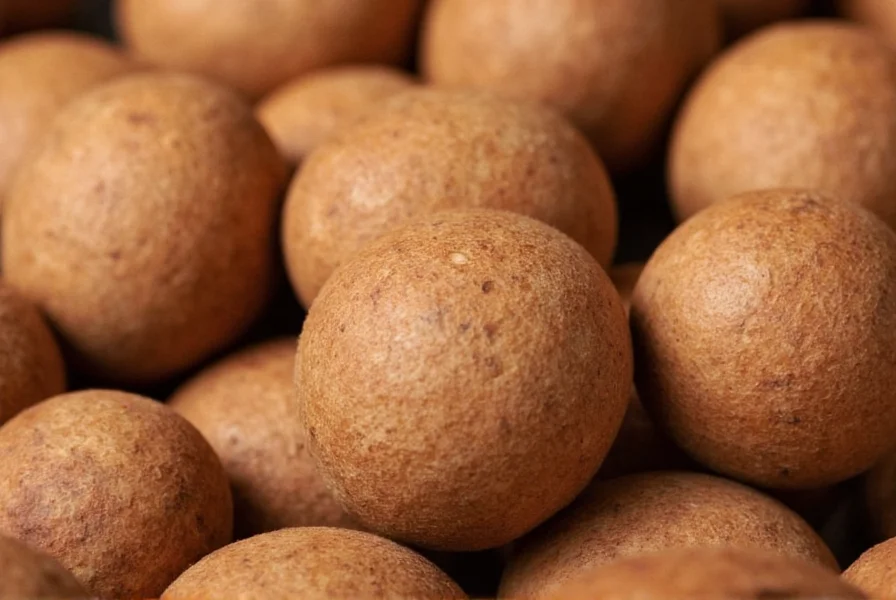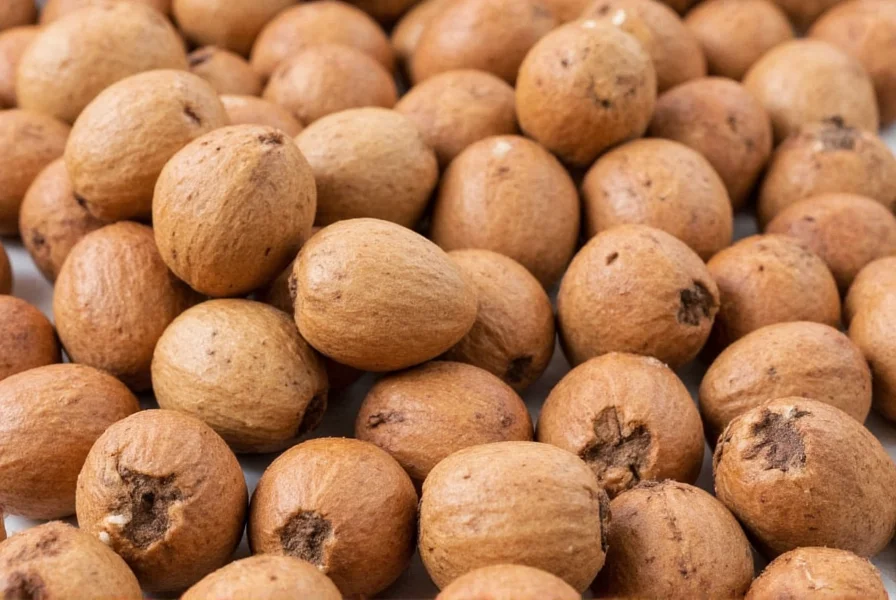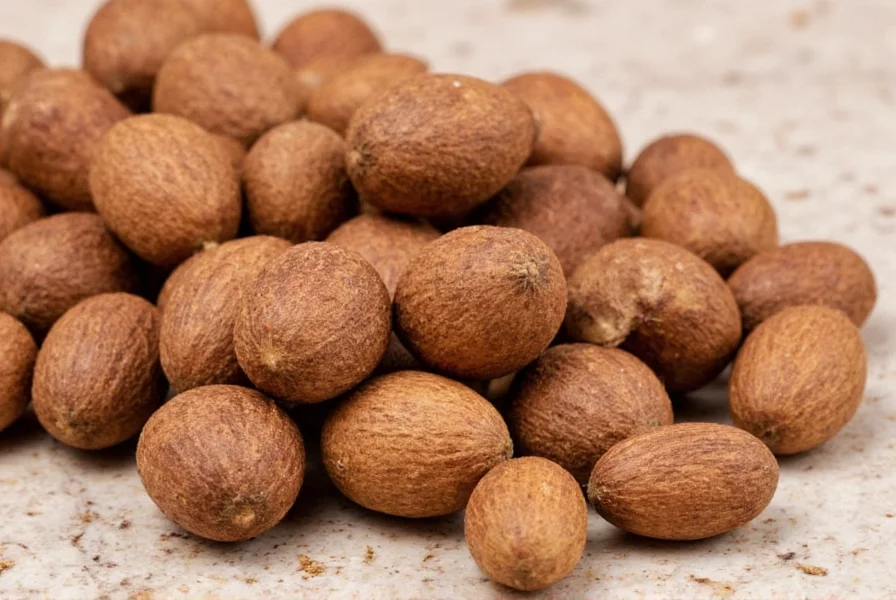When exploring the difference between Indian nutmeg and regular nutmeg, it's crucial to understand they come from different species within the Myristicaceae family. While true nutmeg (Myristica fragrans) originates from the Banda Islands of Indonesia, Indian nutmeg (Myristica malabarica) is native to the Western Ghats biodiversity hotspot in India. This distinction matters significantly for culinary applications and safety considerations.
Botanical Classification and Origins
Indian nutmeg (Myristica malabarica) belongs to the same family as true nutmeg but represents a separate species with unique properties. The tree grows up to 20 meters tall in evergreen forests of southwestern India, particularly in Kerala and Karnataka. Its seeds contain myristicin, the same psychoactive compound found in true nutmeg, but in different concentrations and combinations with other compounds.
True nutmeg (Myristica fragrans) produces both nutmeg (from the seed) and mace (from the aril), while Indian nutmeg's aril lacks the distinctive red color and flavor profile of mace. This Myristica malabarica vs Myristica fragrans comparison reveals why they shouldn't be used interchangeably despite their similar names.

Physical Characteristics and Identification
Indian nutmeg seeds are oval-shaped, measuring approximately 2-3 cm in length, with a brown, hard shell. When cracked open, the kernel appears pale yellow to light brown. The most reliable way to distinguish it from true nutmeg is through botanical examination of the tree and fruit characteristics.
| Characteristic | Indian Nutmeg (Myristica malabarica) | True Nutmeg (Myristica fragrans) |
|---|---|---|
| Native Region | Western Ghats, India | Banda Islands, Indonesia |
| Aril (Mace Equivalent) | Pale yellow, less aromatic | Bright red, highly aromatic |
| Primary Chemical Profile | Different myristicin ratio, unique compounds | Standardized myristicin content |
| Culinary Safety | Limited traditional use, safety concerns | Widely used globally, established safety profile |
Culinary Applications and Limitations
Despite its name, Indian nutmeg culinary uses are quite limited compared to true nutmeg. In some regional Indian cuisines, particularly in Kerala, small amounts have been traditionally used in specific meat preparations and pickles. However, experienced chefs caution against substituting it for regular nutmeg due to flavor differences and potential safety issues.
The question can you substitute Indian nutmeg for nutmeg has a clear answer: it's not recommended. The flavor profile differs significantly, with Indian nutmeg having more bitter notes and less of the warm, sweet aroma characteristic of true nutmeg. Additionally, the safety profile hasn't been as thoroughly studied as that of Myristica fragrans.
Safety Profile and Toxicity Considerations
One of the most critical aspects to understand is is Indian nutmeg safe to eat. While true nutmeg is generally recognized as safe in culinary quantities, Indian nutmeg presents different concerns. Limited research suggests it contains similar compounds to true nutmeg but in different proportions, potentially making it more toxic.
Consumption of Indian nutmeg in quantities beyond traditional culinary use may cause:
- Nausea and gastrointestinal discomfort
- Neurological symptoms similar to nutmeg intoxication
- Potentially more severe reactions due to unknown compounds
Unlike true nutmeg, which has centuries of documented safe culinary use, Indian nutmeg lacks comprehensive safety studies. This East Indian nutmeg toxicity profile makes it unsuitable as a regular spice substitute.
Traditional Medicinal Applications
Within Ayurvedic medicine, Indian nutmeg has been used sparingly for specific conditions, though documentation is limited compared to true nutmeg. Traditional applications include:
- Small doses for digestive issues
- External applications for skin conditions
- Rare use in specific herbal formulations
Modern research on traditional uses of Indian nutmeg in Ayurveda remains sparse. Unlike true nutmeg, which has been more extensively studied for potential health benefits, Indian nutmeg lacks substantial scientific validation for medicinal use.

Availability and Substitution Guidance
Finding authentic Indian nutmeg outside its native region can be challenging. When available, it's typically sold in local markets in southwestern India. International buyers should exercise caution, as mislabeling is common in spice markets.
If you're seeking authentic Indian nutmeg for traditional recipes, consider these guidelines:
- Purchase from reputable spice merchants specializing in regional Indian ingredients
- Verify the botanical name (Myristica malabarica) on packaging
- Use only in recipes specifically calling for this ingredient
- Never substitute 1:1 for true nutmeg without recipe adaptation
For most Western and global recipes, true nutmeg remains the appropriate choice. Understanding where to find Indian nutmeg versus regular nutmeg helps prevent potentially unsafe substitutions.
Conclusion
Indian nutmeg represents a distinct botanical entity from the nutmeg commonly used worldwide. While they share a family name and some chemical components, their differences in safety profile, flavor characteristics, and traditional usage make them non-interchangeable. Cooks and consumers should respect these distinctions to ensure both culinary success and personal safety. When exploring regional spices, accurate identification and understanding of proper usage remains essential for enjoying global culinary traditions responsibly.











 浙公网安备
33010002000092号
浙公网安备
33010002000092号 浙B2-20120091-4
浙B2-20120091-4